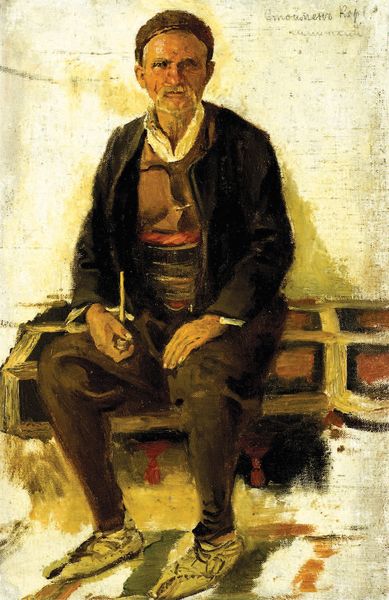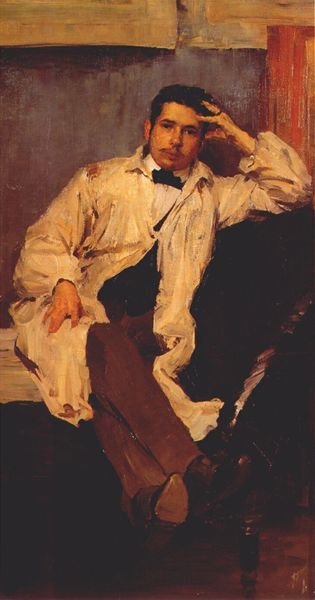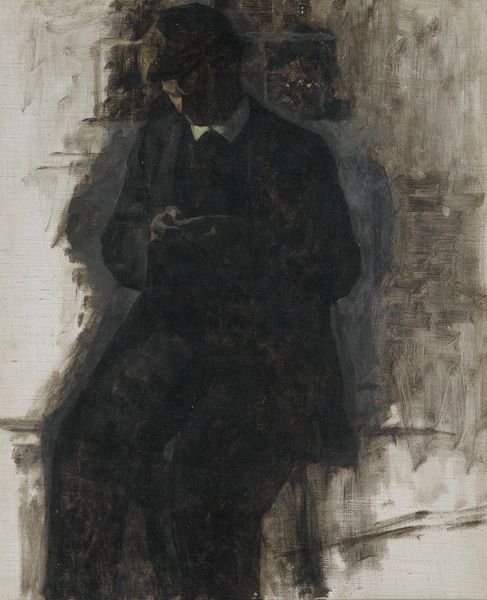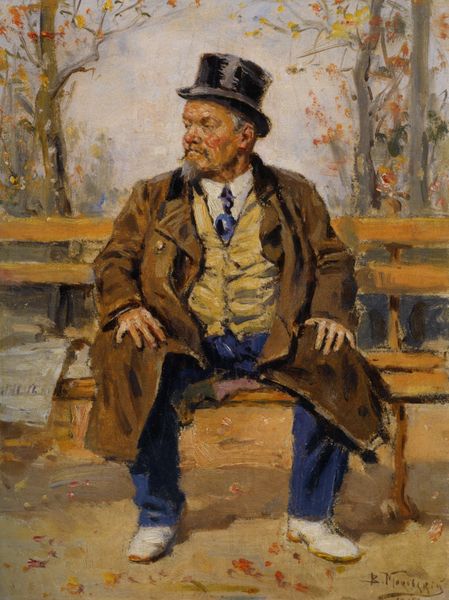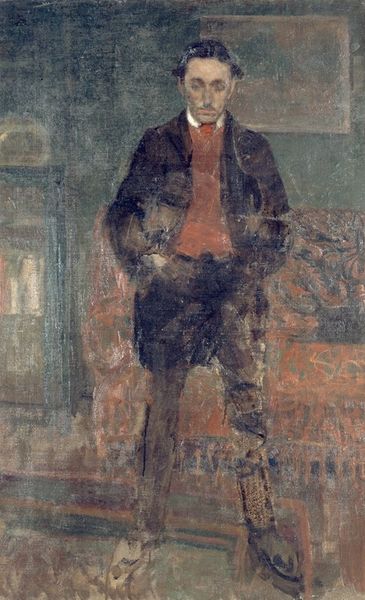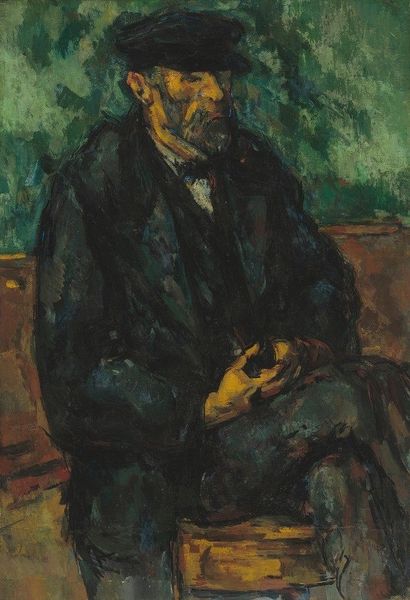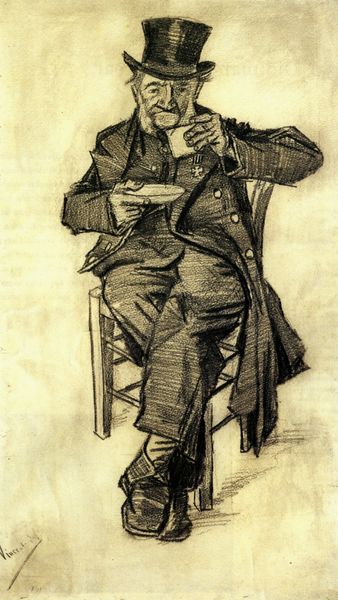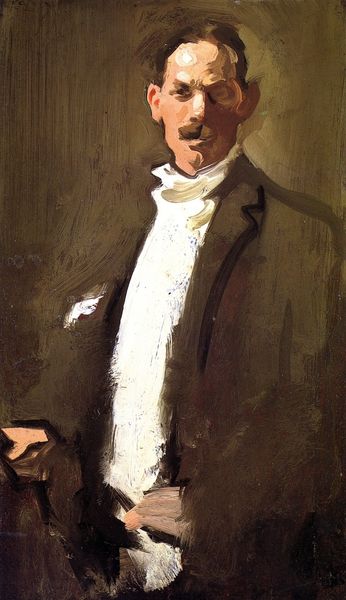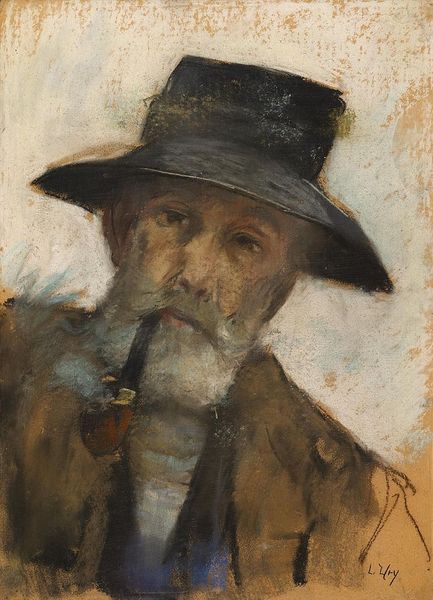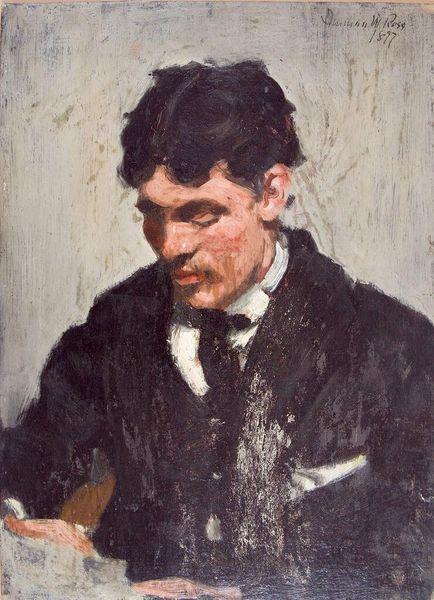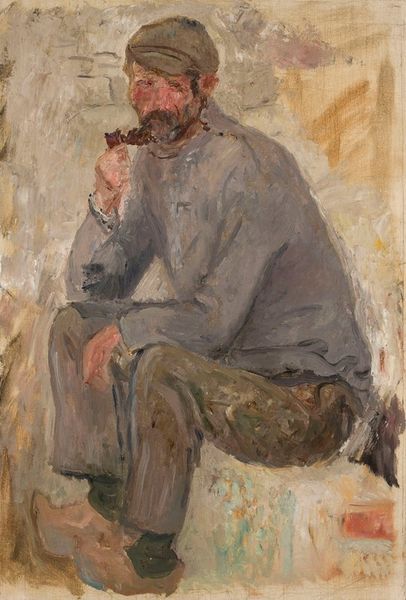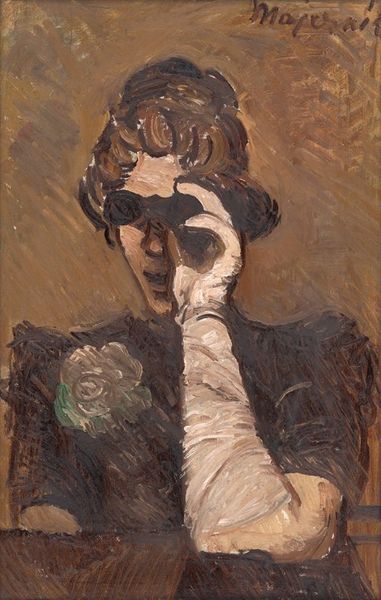
Copyright: Public domain
Konstantin Makovsky, a Russian artist, painted this portrait of a blind man, date unknown, possibly during the late 19th or early 20th century. It depicts a seated figure with a weathered face, wearing traditional clothing and playing a musical instrument, likely a hurdy-gurdy. Makovsky was known for his idealized depictions of Russian life, but here we see a more sober and intimate portrayal. The image creates meaning through its cultural references to Russian peasantry and the historical associations of blindness with poverty and social marginalization. During this time, Russia was undergoing significant social and economic changes, with many peasants migrating to cities in search of work, and the art world becoming increasingly interested in Realism, it is likely that this image reflects a growing awareness of the plight of the less fortunate. To truly understand a work of art, we must consider the social conditions that shape artistic production. By consulting historical records, cultural studies, and institutional archives, we can gain insights into the complex interplay between art and society.
Comments
No comments
Be the first to comment and join the conversation on the ultimate creative platform.
